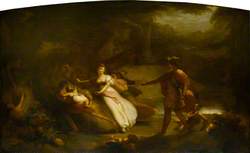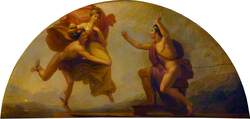How you can use this image
This image can be used for non-commercial research or private study purposes, and other UK exceptions to copyright permitted to users based in the United Kingdom under the Copyright, Designs and Patents Act 1988, as amended and revised. Any other type of use will need to be cleared with the rights holder(s).
Review the copyright credit lines that are located underneath the image, as these indicate who manages the copyright (©) within the artwork, and the photographic rights within the image.
The collection that owns the artwork may have more information on their own website about permitted uses and image licensing options.
Review our guidance pages which explain how you can reuse images, how to credit an image and how to find images in the public domain or with a Creative Commons licence available.
Notes
Add or edit a note on this artwork that only you can see. You can find notes again by going to the ‘Notes’ section of your account.
The chemist and inventor Davy is recognised for his groundbreaking work with gases and electrolysis. In 1807 he demonstrated the existence of potassium, sodium and chlorine with a galvanic battery. He also experimented with diamond combustion and invented the miner's safety lamp in 1815. He was rewarded for his contribution to science with a baronetcy (1818) and the presidency of the Royal Society (1820). Davy was a close friend of Wordsworth, Coleridge and Southey and from them he absorbed the concept of 'Romantic genius' to which he aspired. With good looks and entrepreneurial flair, he was one of a new breed of celebrity scientists whose experiments, at the newly established Royal Institution, were so charismatic that they became social events.
Title
Sir Humphry Davy, Bt
Date
1803
Medium
oil on canvas
Measurements
H 128.3 x W 102.9 cm
Accession number
4591
Acquisition method
Purchased, 1967
Work type
Painting








